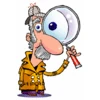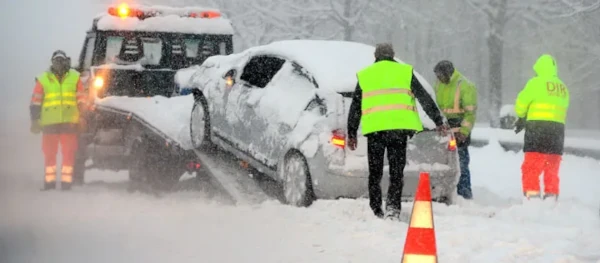 Question: We know why they do it but what legal authority do tow trucks have to block (cone off) a whole lane on the highway one when the stall is on the shoulder?
Question: We know why they do it but what legal authority do tow trucks have to block (cone off) a whole lane on the highway one when the stall is on the shoulder?
Work in Progress

The Motor Vehicle Act imposes requirements for work taking place on a highway. This includes work being done by tow trucks:
138 On a highway where new construction, reconstruction, widening, repair, marking or other work is being carried out, traffic control devices must be erected indicating that persons or equipment are working on the highway.
Unless it is a major collision scene tow trucks often do not put out warning signs and rely instead on their flashing yellow lights to alert approaching traffic.
Erection of Speed Signs
139 On a highway where new construction, reconstruction, widening, repair, marking or other work is being carried out, traffic control devices must be erected to limit the rate of speed of vehicles or to restrict the manner in which the vehicles are to proceed on the highway.
This rule has been made somewhat redundant by the slow down, move over law. Unless a speed of less than 40 km/h in municipal areas or 70 km/h in rural areas is required for safety there is no need to place speed control signs.
Obeying Flagger
141 If a flagger is controlling the movements of traffic around the section of highway being worked on, a person must not drive or operate a vehicle other than as directed by the flagger.
Sadly, some drivers have trouble with this. Ask any flagger and they all have stories to tell about drivers who are more important than anyone else using the road.
Establishing a Safe Work Zone for Tow Trucks
The placement of traffic control devices (cones and signs) is also governed by the Occupational Health and Safety Regulations in Part 18. This part references the Traffic Management Manual maintained by the Ministry of Transportation and Transit that details how these devices must be used.
Permission From the Ministry
The Ministry of Transportation and Transit also provided the following information:
Tow truck drivers are empowered to temporarily close a lane, if necessary, to protect roadside workers and the travelling public, as long as they carry out the necessary traffic management procedures.
A tow truck operator can also contact local law enforcement and ask for assistance in securing a safe work environment by attending the site and engaging blue flashing lights.
Inadequate Advanced Notice
This is a situation that often bothers me as a driver. Sometimes the tow trucks are at the roadside in front of the broken down vehicle or positioned in a way that makes their flashing warning lights difficult to see until you are very near to the location that they are working. Now you have to slow down and move over if possible with little time to do it.
Lack of notice means that the move over part of the requirement may be difficult to do, so the worker is actually reducing their own safety margin.
Share This Article
I didn’t realize that tow trucks were included under Sec 122.1 of the Motor Vehicle Act. According to the above statement the ministry allows them to stop and stand and where they see fit to close or block a lane. I’m quite sure this would never hold up should some motorist be injured or killed as a result of this unwritten law.
Slow Down - Move Over is a great idea, but with most tow trucks having their “roof mounted” flashing lamps actually not mounted on the roof but behind the cab, this makes the visibility of these safety devices all but practical except on decktrucks.
isnt it better if the towing industry were to use buffer vehicles with arrow boards to let traffic approaching a working tow truck ahead of a breakdown as more effective than just taking a risk in hope someone will notice.
police and fire even the ambulance don’t make stops in which their emergency lighting is blocked from view. So why do tow trucks now want blue and white flashing lamps in BC when it’s already impractical to see their amber lights.
Some forethought goes goes a long way before demanding emergency vehicle lighting or authority in law.
- Log in to post comments
Tow trucks are not emergency vehicles:
"emergency vehicle" means any of the following:
(a) a motor vehicle, or cycle as defined in Part 3, carrying rescue or first aid equipment if there is an urgent emergency justifying a rate of speed in excess of any maximum rate of speed provided for in this Act;
(b) a motor vehicle, or cycle as defined in Part 3, driven by a member of a fire department in the discharge of his or her duties;
(c) a motor vehicle, or cycle as defined in Part 3, driven by a peace officer, constable or member of the police branch of Her Majesty's Armed Forces in the discharge of his or her duty;
Section 122 does not apply to them.
- Log in to post comments
Maybe the province should consider changing 122 to include tow trucks. There are many times when a tow truck has to drive in ways which are against the MVA. For instance, sometimes they need to turn around and park facing on coming traffic, in order to properly attach to a vehicle. Another circumstance would be a collision on a two lane highway where traffic cannot get by the scene. In this case, the tow truck has to cross into oncoming traffic in order to get up to the collision scene. Doing so is very dangerous considering, but there is no other option unless there is a very wide shoulder.
Another solution would be allowing tow trucks to have wig-wag headlight flashers for situation where they have to drive into oncoming traffic. In many states tow trucks, who have the contract with the local police agency, are allowed to run red and blue lights with sirens. This is to help them get through stopped traffic so that collision scenes are cleared in less time. The sooner that gets done, the safer it is for everyone.
- Log in to post comments
- Log in to post comments

Tow trucks blocking lanes